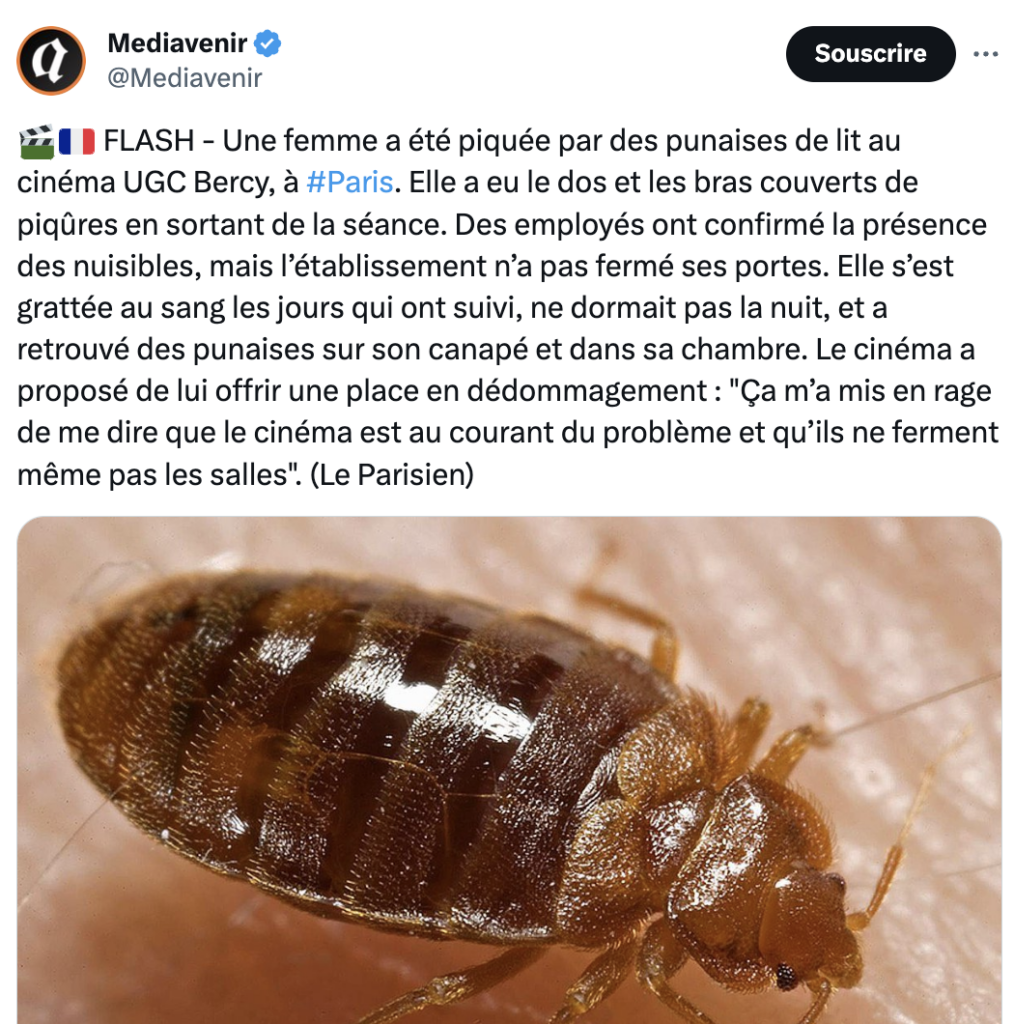Sommaire
How did the bedbug controversy spread?
The emergence and rapid spread of the bedbug controversy on social media offers a fascinating case study on the influence of these platforms in disseminating information and shaping public debate. I wanted to delve into how this public health issue, initially discreet and technical, gained significant attention on platforms like Twitter (now X) and Facebook over the course of a year, triggering a wide range of reactions, interpretations, and discussions. From the initial announcement by health organizations to the adoption of the topic by various online communities and its coverage by traditional media, this case illustrates how quickly a concern can transform into a viral phenomenon.

Key Takeaways
A normal propagation for this type of controversy
The spread of this controversy follows a relatively standard pattern:
- Weak Signals Phase: Initial elements emerge that bring the issue to the public’s attention in the background.
- Triggering and Illustrative Cases: Bedbug cases at an UGC cinema and on SNCF trains become subjects of testimony.
- Media Amplification: The media picks up these cases, either by reporting them or by concluding the media cycle with in-depth articles on bedbugs.
- Political Sequence: The media coverage prompts political actions, leading to parliamentary questions and a government press conference.
- Social Media Opposition: Opposition groups on social media mock the government in response to its actions.
Throughout the sequence, younger communities on X create jokes, montages, memes, and other humorous content. This is a fairly typical scenario.
A dual-focused controversy: Humor and Politics
Analyzing the engaged communities reveals two clear dynamics:

On one side, humor serves as an outlet and a means of raising awareness, turning the controversy’s details into widely shared memes, jokes, and satire. These humorous elements not only entertain but also play a crucial role in making the topic more accessible and encouraging a different kind of reflection.
On the other side, the political aspect of the controversy emerges, where extreme groups use the situation to criticize the government’s handling of public issues.
These two axes become even more evident when mapping out the conversations.

A Russian involvement?
A suspected disinformation campaign, possibly orchestrated by Russia, was identified. Fake articles, primarily spread on pro-Russian social media, falsely linked the resurgence of bedbugs in France to Western sanctions against Moscow or even to Ukrainian refugees.
One of these articles, falsely presented as published by the newspaper "La Montagne" (similar to a case involving "Libération"), was debunked by the newspaper, which labeled the publication a forgery. This disinformation tactic, known as a "doppelgänger" operation, aims to mimic credible media outlets to spread false information.
However, it is unlikely that this represents interference in creating the controversy, as it began with specific cases tied to an ANSES report. Moreover, the visibility of these disinformation campaigns is almost non-existent. If a Russian campaign does exist, it is more likely an attempt to exploit and angle the controversy rather than create it. Comparing the curve of posts on X and the publications in our Follaw Panel (multiplied by 100) with only decision-makers involved, the curves overlap perfectly, indicating minimal involvement.
From an ANSES report to X’s LOL communities to the CNews controversy

A normal evolution for discussions about bedbugs with some weak signals
The controversy saw different peaks, starting with a hospital closure in May, followed by a significant number of articles on bedbugs due to an ANSES report highlighting the growing problem.
"LOL" discussions
These articles were then discussed and commented on within youth communities, illustrated by two striking examples related to UGC and from SNCF which generated numerous comments and shares, leading to more articles.

A controversy around Pascal Pro
A controversy on CNews completed the information cycle. It even allowed young people to revive jokes about bedbugs.

In the show "L'heure des pros" on CNews, host Pascal Praud sparked a heated controversy by asking a question deemed racist. He questioned a possible link between the increase in bedbugs and immigration. His comments triggered immediate reactions from social media, politicians, and associations. The Minister for Combating Discrimination, Bérangère Couillard, and several MPs referred the matter to Arcom (the media regulator) following this statement. In response, an expert guest on the show, Nicolas Roux de Bézieux, clearly refuted any link between bedbugs and hygiene or immigration, stating that these insects are not related to hygiene and affect everyone.
Parliamentary questions followed in October, with 10 questions posed that month, matching the total for the entire year. The government held a press conference simultaneously with the emergence of these questions.



